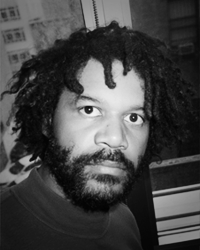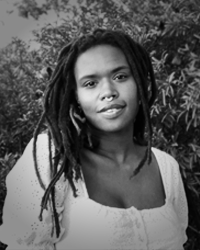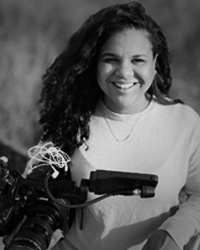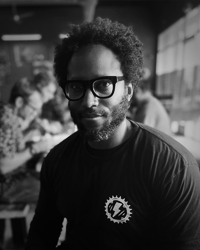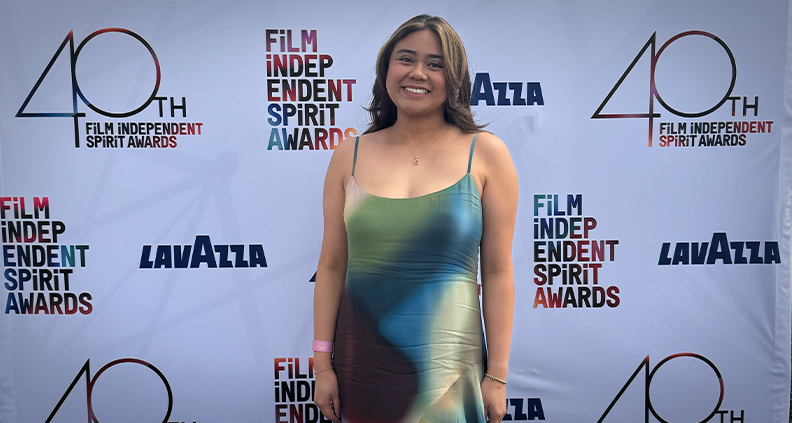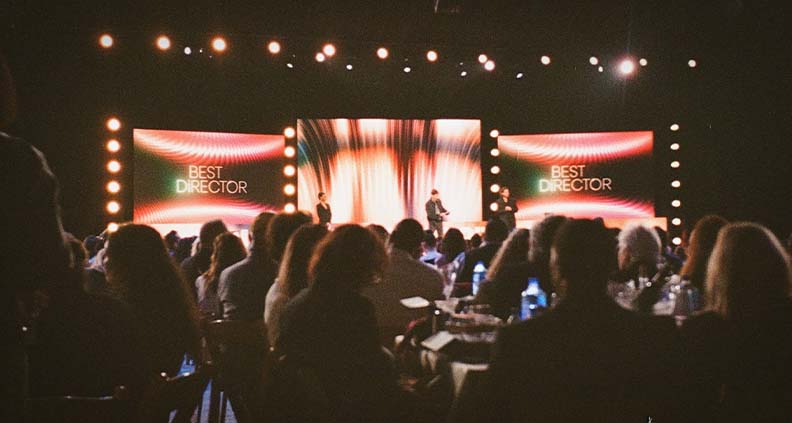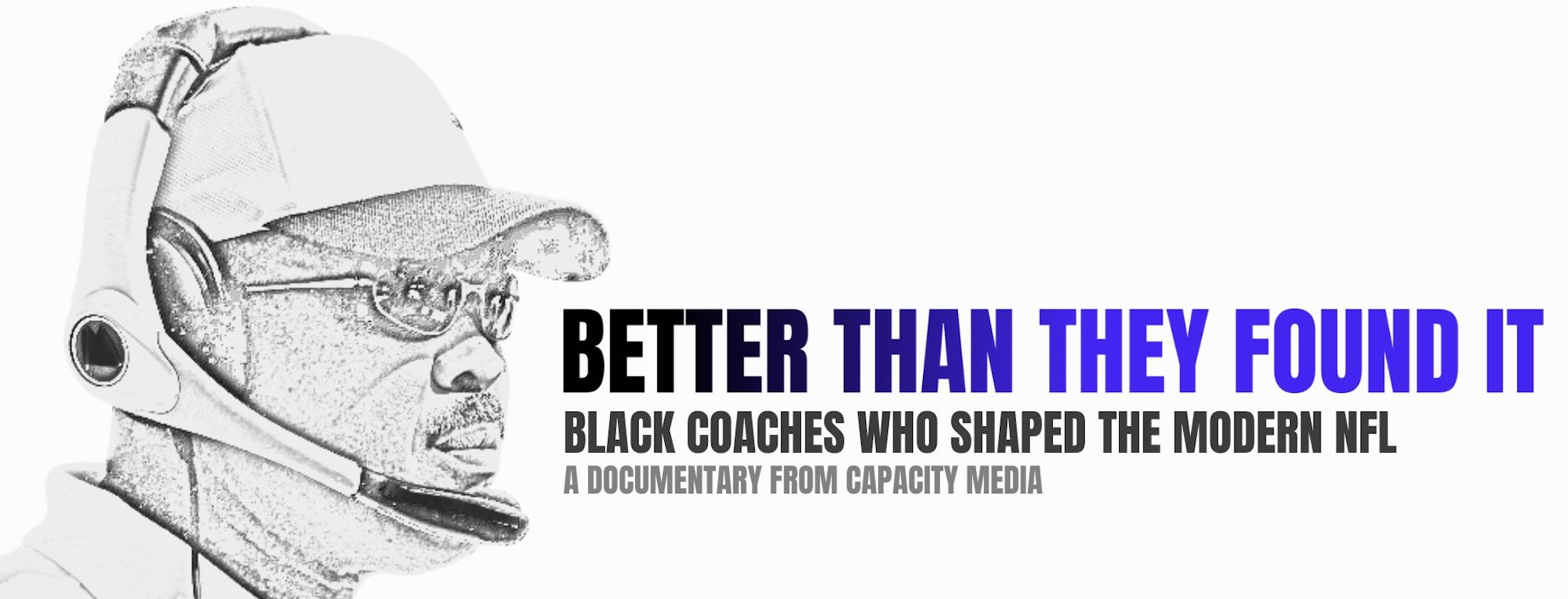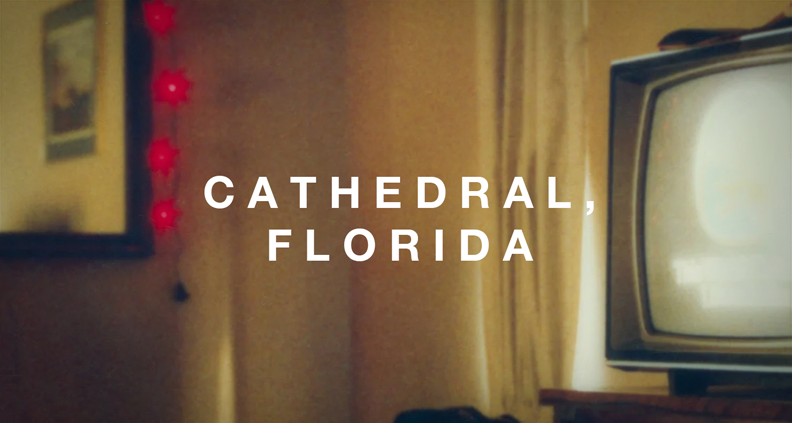Our Indie Stunt Oscars: Indies That Wowed Us with Their Stunt Work
After years of campaigning from industry folks and critics alike, the Academy of Motion Picture Arts and Sciences announced this month that they will be adding a Stunt Design category for its 100th Oscar ceremony in 2028. Something tells me we might get new Mission Impossible, John Wick or Fast and Furious installments in 2027.
Those stunt-driven franchises have been some of the most reliable box office highlights this past decade that aren’t draped in spandex. Seeing death being defied is still one of the most reliable ways to get people to go to the theater. It’s been that way since Buster Keaton. It transcends culture and language, which is why Jackie Chan can become one of the planet’s biggest stars and why The Raid, a film made for $1 million in Indonesia, could become a world-wide success.
A well-executed stunt requires lots of planning, teamwork, and ingenuity, all things that indie filmmakers also happen to specialize in. While the Cruises, Keanus and Ludacris’s of the world do tend to get all the glory, we want to highlight a few indie darlings that we think are just as award-worthy.
EL MARIACHI (1993)
Realistically, we had to start here. Robert Rodriguez’s El Mariachi is the stuff of legend. The director raised half the $7,000 budget for his film by being a human test subject for drug trials.
Condoms were used as squibs to hold the fake blood from gunshot wounds. Wheelchairs were used instead of dollies. And [DO NOT EVER EVER EVER DO THIS] rather than blank-firing fake guns, real guns were used with cuts hiding the guns jamming from empty cartridges.
Safe or not, the creativity of both the stunts and the filmmaking were impossible to ignore, which is why El Mariachi launched Rodriguez’s career (the film won the Spirit Award for Best First Feature), and it’s one of the most famous ‘just go out there and make a movie’ stories out there.
EVERYTHING EVERYWHERE ALL AT ONCE (2022)
The 2022 hit from the Daniels has also been lauded for its creative approach making a blockbuster on an indie scale. It’s famous for having a five person VFX team, but its stunt work is equally impressive. The shots where Michelle Yeoh flies back in an office chair were done in camera, done in slow motion while being under-cranked, to create the streaky visuals. The directors had her in a wheelbarrow acting in slow motion, while shooting a leaf blower at her face to create the wind effect.
Stunt coordinator Timothy Eulich also worked closely with Yeoh and Ke Huy Quan on fight choreography. Both practiced their fight scenes at home to save on rehearsal time, and Yeoh filmed herself on her phone so she could dial in her moves. All of that along with practicals like racoon puppets and hot dog fingers sold the look of being in another universe. The film ended up winning the hearts of audiences everywhere, along with 7 Spirit Awards including Best Feature.
DRIVE (2011)
Talk about turning limitations into assets. The genius of Drive is that it puts the audience in the car with Ryan Gosling’s driver character. The POV style of the opening chase sequence lets you feel like you’re a participant rather than a viewer, but it also cut down the need for exterior shots of the hero car, and ended up as a great cost-saving choice as well.
In another scene, our hero’s car is chased by a Chrysler 300. The team, lead by stunt coordinator Darrin Prescott, rehearsed it on video beforehand, but they could only afford to shoot it once. According to Prescott, “The 300 was supposed to hit a barrier, reverse direction violently and twirl around, like a rally crash we had seen on YouTube. Instead, when it hit the barrier, it went straight up. You could hear people on the set muttering, ‘It wasn’t supposed to do that.’” The result was thrilling all the same, and ended up in the film.
NIGHTCRAWLER (2014)
Nightcrawler director Dan Gilroy agrees that the limitations of where you put the camera can actually help the audience feel like they’re in the middle of the action. “Chases now have become spectacle. It’s like, ‘Let’s shoot the hell out of it. Let’s jump to the intersection where we know there’s going to be a crash. Let’s get out of the car and shoot as wide as possible, 80 cuts in like four seconds.’ Staying in the car makes it more frightening.” It took 6 weeks to plan the climactic chase sequence, and the team used a model and Hot Wheels cars to visualize how it would all go down. All that planning let the team shoot principal photography in just two nights, with second unit shooting two more. The film ended up nominated for 7 Spirit Awards and won Best First Feature and Best Screenplay for Gilroy.
UPGRADE (2018)
The best gyroscope is the one you have with you. At least that’s what the filmmakers behind Upgrade thought. They strapped an iPhone to actor Logan Marshall-Green in its fight scenes and through an app, translated the actor’s movement data from the phone’s internal gyroscope to a special camera rig, the MKV Omega-R, so that the camera would rotate and move in sync with the actor’s motions. The result was that the fight sequences looked like nothing else out there. Of course, making a great fight scene isn’t all camera trickery. Stunt coordinator Chris Anderson and star Marshall-Green made the dynamic brawls come to life through their choreography as well. Director Leigh Whannell and company really did take iPhone filmmaking to another level.
For over 40 years, Film Independent has helped filmmakers get their projects made and seen. The nonprofit organization’s core mission is to champion creative independence in visual storytelling and support a community of artists who embody diversity, innovation and uniqueness of vision.
Keep up with Film Independent…
VIDEO: Will Poulter, Barbie Ferreira and Some Misdemeanor B&E
Spring is in full bloom here at Film Independent, and the seasons best Indies have blossomed at our Film Independent Presents Screenings. The great thing about this season’s films is the great variety of genres you get. We showed an epic queer romance in On Swift Horses, a of-the-moment anti rom-com with I Love You Forever, a coming of age crowd-pleaser with Bob Trevino Likes It, and a punk time-capsule of a documentary in Secret Mall Apartment.
After each screening, of course, we bring the audience into the filmmaking process with Q&As with the creators and stars of the film. Here are a few of our latest Q&As
BOB TREVINO LIKES IT
Sometimes the love and support you need comes from unexpected places. In Bob Trevino Likes It, Lily Trevino (Barbie Ferreira) goes looking for her estranged father Bob on Facebook, and instead finds a man with the same name, and the two form an unexpected bond. The film is loosely based on writer/director Tracie Laymon own experience. In this Q&A, Laymon, Ferreira and actor Lauren “Lolo” Spencer speak with Film Independent’s Kate Mason about the importance of taking big swings in indie film, and how finding authenticity in yourself and in those around you in their new film, .
ON SWIFT HORSES
Creating subtext, subverting expectations, and making a sexy film were top of mind for director Daniel Minahan, and actors Will Poulter and Sasha Calle in their new film, On Swift Horses. The speak with speak with Vanity Fair’s David Canfield. They also touch on creating fully formed characters with histories, and the experience of navigating living a queer life in the 1950s.
SECRET MALL APARTMENT
Having a secret hiding spot is one of those universal childhood experiences. You’re protected from the world, and can create one of your own there. For his new film, Secret Mall Apartment, director Jeremy Workman learned with a group of artists who lived in a Connecticut shopping mall for 4 years, but he also got obsessed with art for the sake of art, gentrification, the pre-internet age, and the idea of pushing boundaries in life. He spoke with Film Independent’s Jenn Wilson.
I LOVE YOU FOREVER
For I Love You Forever, writer/directors Cazzie David & Elisa Kalani built a harrowing film about control, power and self-doubt, and wrapped it all up in a rom-com package. Oh, and it’s hilarious too. The two co-directors are friends in real life too, and they talk about bringing that connection to set, where they have their own shorthand, and can complement each other’s strengths. They talk about it all with Film Independent’s Kate Mason.
These screenings were all free for Film Independent members. Join today, and the next one can be free for you too.
For over 40 years, Film Independent has helped filmmakers get their projects made and seen. The nonprofit organization’s core mission is to champion creative independence in visual storytelling and support a community of artists who embody diversity, innovation and uniqueness of vision.
Keep up with Film Independent…
GUEST POST: Finding My Way– Reflections on Producing My First Feature and Belonging
We asked 2023 Producing Lab Fellow Daniel Tantalean to share his experience in the Lab workshopping his film In the Summers, the 2024 Sundance Grand Jury Prize winner about two siblings visiting their father over the course of one life-changing summer. Follow Daniel on Instagram at @DanTanFilm.
Applications for this year’s Film Independent Fiction Producing Lab are currently open, with the regular deadline of May 3.
***
As a person and a filmmaker, I’ve always tried to follow my heart. When I first stepped into the crazy world of filmmaking, I had no idea which path I’d end up taking. There were so many avenues within the film and television industry to explore. It took years of exploring, testing out different positions and sectors, before I landed on the one that felt right– becoming an independent producer. And I chose it for a simple reason: I was looking for a strong, passionate community.
I am naturally an introvert. I’ve carried misplaced shame throughout my life, largely tied to the depression I’ve lived with since I was young. I’ve always searched for a place where I could belong, build my voice, and grow into a more confident version of myself. I got my first real taste of that in film school, where I unexpectedly stepped into a kind of leadership role in our small but determined young film students at Arizona State University. It was very much DIY in those early days, but we made it our own. And whether I realized it or not, that spirit of collective effort and possibility laid the foundation for what I would seek in my career moving forward.
That same sense of community reemerged during the Film Independent Producing Lab while I was producing my first feature film, In the Summers. The Lab gave me the chance to learn from an incredible mentor, Rebecca Green, as well as from a variety of guest speakers covering everything from international co-productions to production legal to distribution. At that point, I had spent years honing my producing skills, but I still had so many knowledge gaps. Over the course of just ten days, I felt myself begin to blossom. As the information clicked into place, I found not only clarity but belonging. The most valuable thing I walked away with wasn’t just knowledge, it was being welcomed into a supportive, compassionate, and inspiring community.
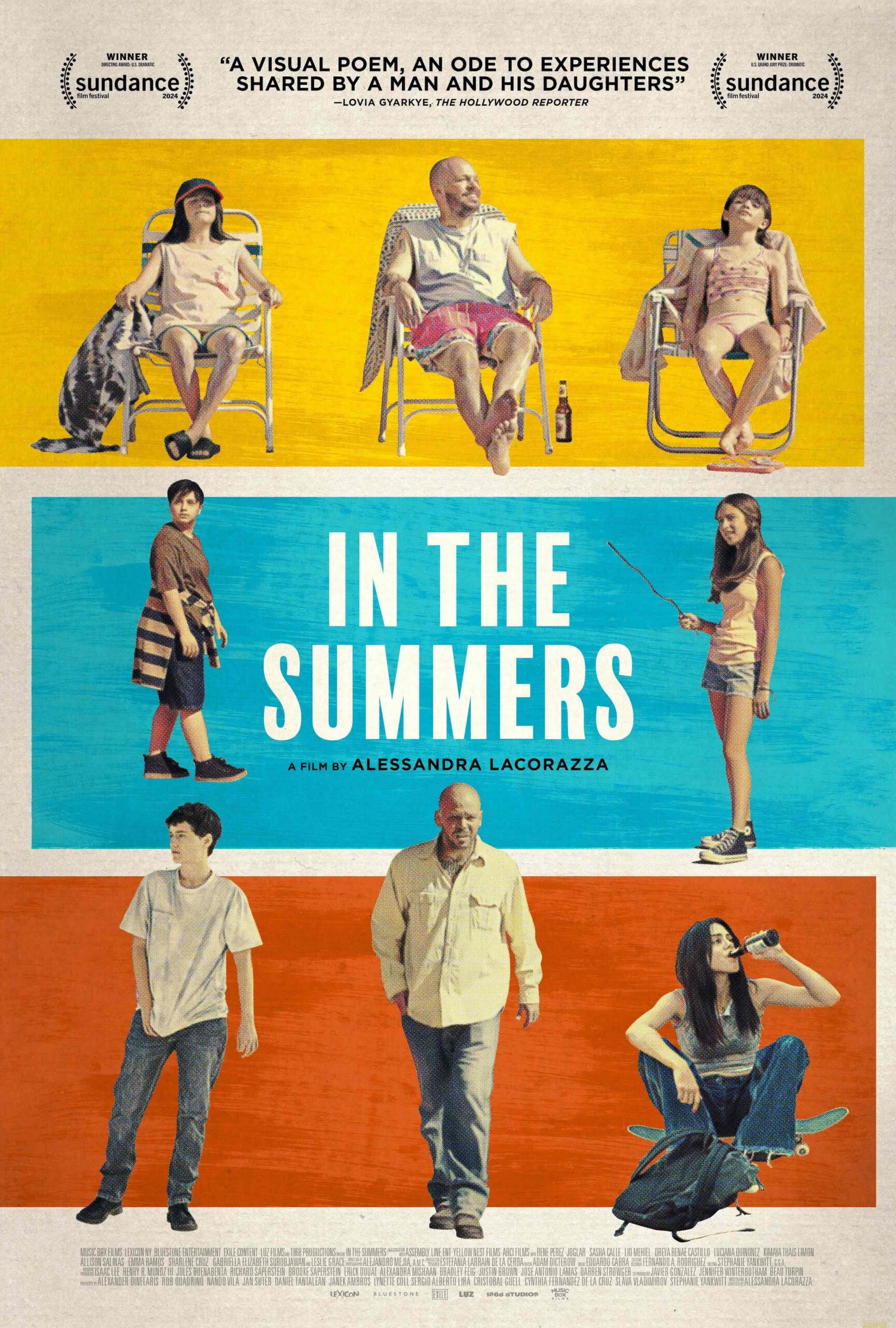
Being a “Producer” can feel nebulous and isolating. Even within the industry, many people misunderstand the producer’s role (sometimes even those who call themselves producers). The industry undervalues our work, prioritizing top-tier name talent, who take producing credits without doing the actual labor. Yet, sandwiched in between those irritating realities, I get to define who I am in this space and to me a producer is two parts of a whole: the primary function of putting a film together and a community organizer searching for daring new voices.
That’s exactly what I felt when I encountered Alessandra Lacorazza’s work and was invited to read In the Summers. From the first page, the script felt like home. It echoed the world I came from and also introduced me to Alessandra’s singular voice. I boarded the project in 2020 as Producer and yet I still remember the deep insecurity I felt. This was an ambitious debut feature. I worried I wasn’t ready, that I might not be enough. I didn’t want to let anyone down, especially the story.
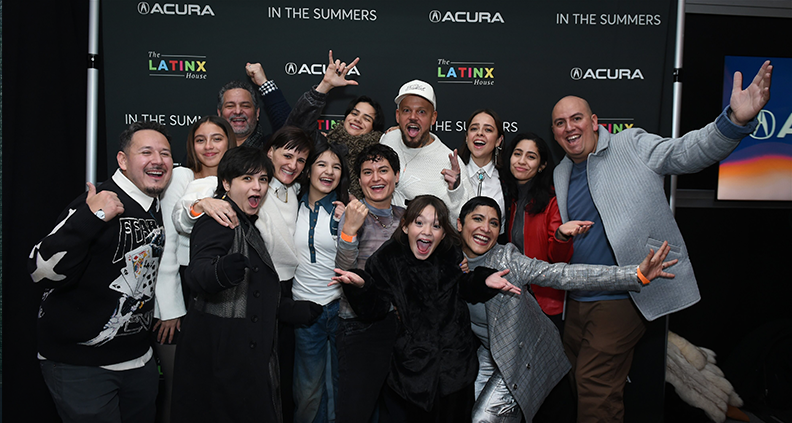
In the Summers would go on to premiere at Sundance, winning the U.S. Dramatic Competition Grand Jury Prize and Best Director, and two Independent Spirit Award nominations. For a debut feature, both for Alessandra as a director/writer and for me as lead producer, this was a rare opportunity for our community to be seen in a larger context. For most filmmakers, this is the dream. It has opened many doors and I’m grateful every day to Alessandra for trusting me, even when I was still figuring things out.
But from the outside looking in, the sexiness of the moment can distract from what is often hidden away; how fragile everything feels behind the scenes. Every day felt like a miracle. From prep to production, the film constantly threatened to fall apart but somehow, we kept going. The breaking point came during post-production, when we ran out of money. We couldn’t finish the film.
That crisis hit just as I was going through the Producing Lab. I remember the overwhelming rush of shame and fear. My depression spiraled. I thought: Did I just fail this film? How could I have made so many mistakes? Am I not ready? The self-doubt was paralyzing. But what I remember most about that moment is not the fear— it’s the community. My Film Independent cohort, the artistic leadership, and Rebecca Green didn’t let me fall. They rallied. They supported me. They helped me find solutions when I couldn’t see them myself. And the In the Summers team found a way and made it to Sundance.
Most of us choose this path. And independent filmmaking is one of the hardest undertakings out there. The system often pits us against one another. It fosters scarcity and gatekeepers try to reduce us to the most common denominator so they can place “safe bets”. Yet, in all that noise, there is still a powerful community doing the necessary and crucial work. The only mandate they have is to make honest work that challenges our everyday norms and conceptions. A place for coalition building and working towards a better independent ecosystem.
As I look ahead to the next chapter of my life and career, I keep returning to the questions during the hardest moment of In the Summers. Now, with some distance, I can answer them more clearly.
Yes—I made mistakes.
Yes—I wasn’t always my best self.
Yes—I wasn’t ready in some ways.
Yes—I failed in small and big ways.
But just because those things were true doesn’t mean they define me. They were a part of the journey. And in having this experience, I now have the opportunity, and the responsibility, to be better. A better producer. A better person. A better collaborator. A better advocate.
Mistakes are part of becoming who we are. But growth requires work.
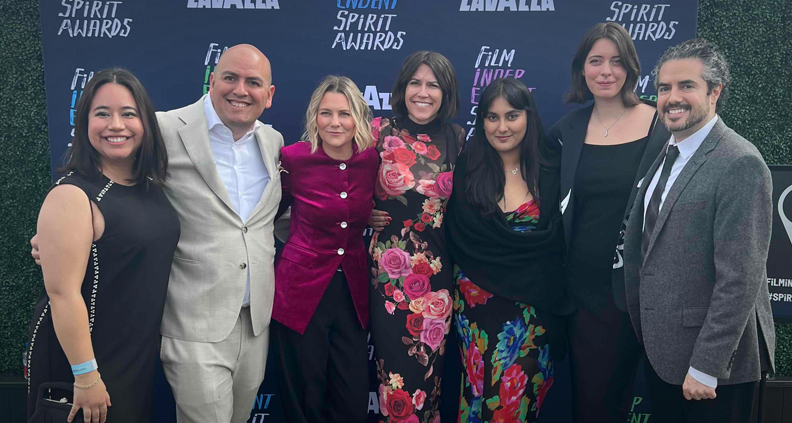
In the rat race to get our films made, it’s easy to forget the amazing amount of generosity that lives in our community. Film Independent is the clearest example of that. Their mission, their leadership, and their commitment to new and established independent voices is a gift, especially in a time of such uncertainty. It has been the privilege of a lifetime to be recognized by them, not just for myself, but for what they saw in In the Summers and in Alessandra’s voice. Our community is stronger when our stories are visible.
***
Applications for the 2025 Film Independent Fiction Producing Lab are now open for Film Independent Members until May 19th.
Film Independent Members watch nominees and vote for the winners of the Spirit Awards. To become a Member of Film Independent and make your vote count for next year’s 40th Annual Spirit Awards, just click here. To support our mission with a donation, click here.
Header Image: Daniel Tantalean and producer Rebecca Green, Dear Producer Tribeca Event, Photo by Serena Jankovic
Daniel Tantalean is an Indie Spirit Nominated and Sundance Winning Producer and the founder of Yellow Nest Films. In the Summers won the Grand Jury Prize award at the 2024 Sundance Film Festival and has been nominated for Best First Feature at the 2025 Indie Spirit Awards. Daniel is a 2023 Film Independent Producing Lab Fellow and he is also a 2020 and 2022 NALIP Latino Media Market Fellow, and was chosen for the 2024 Tribeca Creator’s Market for the feature documentary Rebel Without A Pause.
His exceptional work has been featured at top film festivals including Sundance, Tribeca, SFFilm, Hot Docs, and Big Sky Documentary Film Festival. Daniel was shortlisted for the 2021 AT&T Untold Stories Competition and produced the award-winning short doc Ale Libre distributed by The New Yorker.
Keep up with Film Independent…
Disc Jockeys: The Worlds Biggest Video Rental Store Is in Seattle
Editor’s Note: ‘Disc Jockeys’ is a new column featuring video stores across the country that provide their communities with access to DVDs, Blu-Rays and VHS (that can – and often can’t – be found anywhere else), in which we explore what it takes to survive as a physical media store in the age of streaming.
Scarecrow Video is a Seattle institution. Opened in 1988 by two cinephiles, George Latsios and Rebecca Ruhl Soriano, the video store build its collection up from 600 to now 147,000 unique titles (over 150k pieces in total). Of course, the path to get there wasn’t a straight one. The store thrived durring the rental boom of the 90s and had to find a way to survive the online rental and streaming revolution of the 2010s (much like Beyond Video in Baltimore, they are now a nonprofit run by its staff).
Today, the store, and the community around it have flourished. They still offer Rent-by-Mail to movie lovers all over the country, and it’s unique collection has things that will most likely make you want to use it, like the worlds biggest bigfoot cinema collection, or David Lynch’s TV follow up to Twin Peaks, the little seen On the Air.
Jonathan Marlow started out as a volunteer for Scarecrow Video, helping open a larger location and running a micro-cinema in the store in the 90s. After some time in tech, the board of the SV Archives, which runs Scarecrow, recruited Jonathan to rejoin as the nonprofit’s Executive Director. We spoke with him about Scarecrow’s journey from Mom & Pop video store to the world’s largest public video library.
Tell us a little bit about the Seattle film scene and where a Scarecrow fits into it.
The landscape of Seattle has transformed fundamentally in the last several decades. I grew-up in Lake Stevens, a town roughly an hour to the north. Not unlike many cities around the U.S. or around the world, there were many small cinemas one could attend. More recently, many have shuttered. My hometown did not have a theater but it did have a video store or two. They were all fairly modest compared to Scarecrow Video but I rented whatever I could to watch with my mother and younger brother. They did not often care for the lengthy, glacially-paced films that tended to appeal to me. Whenever I had the opportunity, I ventured into Seattle to rent films I had merely read about within the pages of publications I’d purchased at the nearby Cinema Books.
Scarecrow was founded in 1988 and they had a storefront across town from where it is located now. I became involved when they were looking to move to a larger location. I was just starting university and I’d volunteered to help move their collection—which, at the time, was just under 20,000 titles—to this seemingly enormous space in the University District.
In the decades since, the collection has expanded to 150,000 physical objects representing nearly 200,000 films and television episodes of all durations from essentially every country in the world. It is currently the largest publicly-accessible physical-media archive in the world.
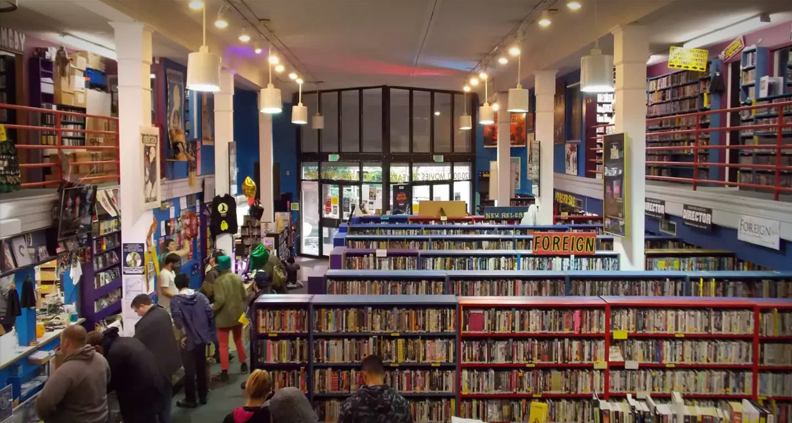
The fact that such a store exists in Seattle makes sense. Seattle tends to be a place, weather-wise, where folks like to spend much of their time indoors during the late-autumn, winter and early-spring. It can be particularly wet and, occasionally, rather cold.
There had always been a desire for Scarecrow-presented events. Way-back-when, there were many presentations with the Seattle Art Museum and elsewhere. When we moved to the Roosevelt location, I built the Sanctuary Theater, the smallest operational cinema in the U.S. on the second floor (slightly less than twenty seats!), where I programmed films unavailable on home video, until 1998. Event-wise, outside of Sanctuary, Scarecrow had been a largely itinerant institution. It regularly partnered with other spaces, like the soon-to-be-reborn Grand Illusion.
There are a number of really remarkable cinemas in town. The Beacon, of course, and Central Cinema. Northwest Film Forum, where I’ve regularly presented screenings even after I moved away. There are many great microcinemas which have changed the landscape of film-going since the multiplexes have largely failed everyone by primarily providing unchallenging work.
Tell us a bit about what being the Executive Director of Scarecrow entails.
I was recently recruited by the Board of SV Archive (aka Scarecrow Video) and, like any small nonprofit, I do a little of everything. Fortunately, I am able to accomplish these things in collaboration with a team of truly wonderful people. I am primarily responsible for making certain that this activity which many individuals view as irrelevant and outdated – the renting of Blu-rays, DVDs, VHS tapes and LaserDiscs – is instead understood to be an essential alternative to the various streaming platforms.
This notion that what we do is antiquated is a conflict of public perception. Streaming is discussed as the solution to every problem and everyone wants to believe that everything is available online. It isn’t and they aren’t. The assumption from some is that this is merely older individuals who never adapted to streaming. The truth is that majority are young people unsatisfied with the limited options that streaming offers. Why choose from such a nominal selection? They want to watch what they want when they want without multiple subscriptions. Scarecrow has more films and series than all of the assorted streaming services combined! More people are renting now than they did a year ago and, in another year, more people will be involved than are renting right now. It is about discovery and access and choice. There are far too many things that you cannot see any other way.
Scarecrow started out as a traditional store, then went through some changes in ownership through the years, finally becoming a nonprofit. How did that transition take place?
The short version is that Carl Tostevin and Mickey McDonough bought the store from George and Rebecca, the original owners. That occurred shortly after I disappeared from the Pacific Northwest but I was fortunate to get to know them. Whenever I ventured to Seattle, I would always make a point of visiting the store to see how things had changed (or not) over time.
Mickey and Carl did an amazing job of keeping everything functioning while the everything was shifting away from physical-media rental. During the early days of rent-by-mail, I was involved with GreenCine, an early Netflix competitor in the Bay Area and later, as one of the co-founders of Fandor. I was very familiar with what we were doing there and how that impacted Scarecrow’s core business.
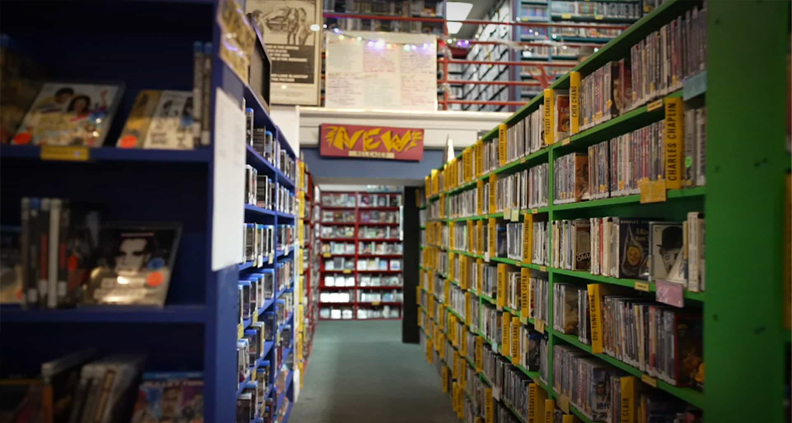
By the early-2010s, it was clear that the for-profit model—entirely reliant on rental and sell-through income—was a challenge for Scarecrow to maintain. In many respects, they kept it going far longer than many others in the space. With the understanding that nonprofit status would open new avenues for funding, the owners initiated a request-for-proposals. One of those proposals came from the staff.
Ultimately, Carl and Mickey accepted the staff-proposal to allow them to transform the for-profit. They generously donated the inventory to the Scarecrow Project rather than selling it, putting the nascent non-profit in an incredible position from the very beginning.
I’m curious about your rent-by-mail program. That feels unique, especially in the modern video store space. How does the program work and why did you decide to do it?
The one thing with a collection of this magnitude, especially when Netflix pulled the plug on rent-by-mail and my former company, GreenCine, stopped renting films through the mail even earlier. There aren’t many other avenues for viewers to get DVDs, Blu-rays or UHDs by mail without buying them.
Building your own home-video collection is fantastic (if you can afford it) but there are those films that you do not necessarily know that you’d want to own forever. Maybe you’re just curious about seeing it once. We introduced a rent-by-mail process a handful of years ago as an alternative to requiring renters to make their way into the store. Those efforts are growing and they’re evolving.
We have a fairly large contingent of renters from the opposite coast but those efforts can be complicated by the inconsistencies of the United States Postal Service. They’re not exactly the most reliable under the current administration. It can take a bit of time to get discs to Brooklyn or Boston or even to Dubuque or Durham. We’ve basically built-in extra time to accommodate renters who reside farther away. Fortunately, the collection is immense enough that it doesn’t impair availability for individuals who are regularly renting in-person from the store.
What are some types of films or specific films that you’re proud that Scarecrow has? What’s something that you’re personally really excited about?
I am primarily thrilled with the entirety of the collection! We still have laserdiscs when they have features which are unavailable on other formats. We maintain our VHS selections for those titles that have never been released on another format. There is a bit of overlap in our Blu-ray, DVD and UHD / 4K titles since not everyone has a player that supports each codec.
Even going back to the beginnings of Scarecrow, the original owners—George Latsios and his partner, Rebecca Ruhl Soriano—were determined (unlike Kim’s Video in New York, for example) that everything in the collection was legitimate. Scarecrow has stayed away from bootlegs from the start and that dedication to only adding country-of-origin releases (and renting the players to allow those to be viewable) has always been a grand model. We have many imports for films otherwise undistributed in the U.S. but nothing particularly grey-area. Definitely the opposite of what you find in massive quantities on YouTube and elsewhere, rife with bootlegs and questionable copyright issues.
For instance, we have a Japanese laserdisc of the television series David Lynch and Mark Frost created after Twin Peaks called On the Air. ABC largely disowned the series and only a few of the episodes aired in North America. Thus far, the primary way to see the series is the Japanese import.
I remember watching it when it debuted and I thought it was absurd and immensely entertaining. I was clearly in the minority. Perhaps not as “out there” as Twin Peaks: The Return but fascinating, nonetheless.
There are many imports on either PAL tape or PAL imported DVDs, works which you are unlikely to find elsewhere. The Jean-Luc Godard television series Histoire(s) du Cinéma presented a complication for U.S. distributors due to the unusually large number of clips requiring rights-clearances. There wasn’t much of a state-side release but there is a PAL four-disc set (and an NTSC two-disc version). Fairly incredible and highly recommended! I am delighted that we have it, along with rarities from Larisa Shepitko, Apichatpong Weerasethakul, Lotte Reiniger, Céline Sciamma, Souleymane Cissé, Věra Chytilová, Raúl Ruiz, Jan Švankmajer (with Eva Švankmajerová) and many others.
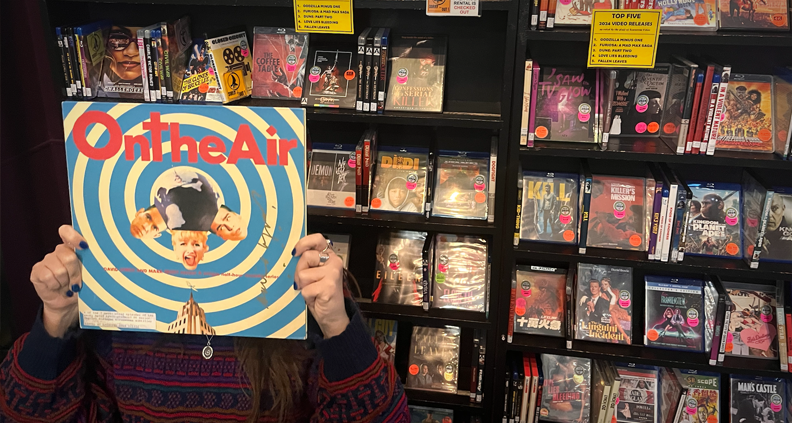
Why are video stores still important?
You know, that is a really great question. You’re calling from Los Angeles, right?
Yeah.
In just the last few years, Vidiots reopened from their original Santa Monica location to their current space [in Eagle Rock]. I think of Vidiots, primarily, as an amazing cinema with a microcinema and video store attached. Fortunately, the video store is also terrific! I adore that they’re committed to their video store past.
There are other video stores across the continent as well. There is We Luv Video in Austin and Beyond Video in Baltimore, entirely volunteer-operated. There is a bit of a resurgence for video-rental! Like the premature declaration of the death of vinyl and the subsequent reappearance of record stores, video stores and independent bookstores have thrived as well.
The challenge is that there really isn’t an ideal system in-place to deal with video rental at the moment (from a software perspective: we built our proprietary version). Once upon a time, video stores were everywhere. In the Seattle area, there were several fabulous video stores—in addition to the Scarecrow—that survived up until the second decade of the century. They were hanging in there. In our neighbourhood, we’re all that is left.
I’m encouraged that Movie Madness in Portland, Oregon, continues to thrive. They have a small screening space in their building which seems to get rather frequent use. I hadn’t had an opportunity to get back there since the start of the pandemic but I visited last week and it is still rather fantastic. On a weekday, it was full of people wandering around, renting videos. The same thing happens at Scarecrow every day.
Many people who walk through our front doors cannot believe that this could be real. It is a true citadel of cinema! They look around and it is packed full of people renting videos. It is almost as if they’ve opened the doors and were allowed to take a giant leap back in time to the late-1980s or ‘90s. However, the options of what is available is far better than the previous century. This is largely thanks to the small labels like Deaf Crocodile, Arbelos, Grasshopper Film, Dekanalog and others. Obviously, the Criterion Collection releases regularly have substantial appeal as well. KimStim in New York continues to release astonishing films, such as Subete no yoru o omoidasu [Remembering Every Night] and La casa lobo [The Wolf House]. You’re not likely to find those films on the most services, generally. If you have any taste whatsoever, physical media remains your ideal solution.
For over 40 years, Film Independent has helped filmmakers get their projects made and seen. The nonprofit organization’s core mission is to champion creative independence in visual storytelling and support a community of artists who embody diversity, innovation and uniqueness of vision.
Film Independent Members watch nominees and vote for the winners of the Spirit Awards. To become a Member of Film Independent and make your vote count for next year’s 40th Annual Spirit Awards, just click here. To support our mission with a donation, click here.
Keep up with Film Independent…
Truth Tellers: Our Fellows Spill on Their Doc Producing Lab Journey
The role of a film producer involves a lot more than raising money and making calls and speadsheets, as ourDocumentary Producing Lab Fellows will tell you. According to 2024 Fellow Rajal Pitroda, you’re just as much of a therapist for your team as you are a producer. Tight budgets, small crews, and long lead-times can make doc feel a little like you’re stuck on Hitch’s Lifeboat.
Keeping the ship afloat isn’t easy, and we think that the doc producers of the world deserve a life raft. That’s why we are bringing back the Film Independent Documentary Producing Lab for its second year.
Applications for the 2025 cohort are now open, and with a non-Member deadline of May 5th (Film Independent Members have until May 19th).
To give some insight into what goes down in the Lab, we spoke with last year’s Fellows about the challenges as well as the joys of documentary producing, and how the Documentary Producing Lab has helped them on their journey.
What does a documentary producer do?
Rajal Pitroda: A documentary producer does anything and everything that’s needed to get a film done. It’s everything from raising money, to figuring out distribution strategy, to working in partnership with the director on a film’s creative.
Glib Lukianets: I would say that it is something in between journalism and art, with the best that we can take from fiction cinema.
Nicole Tsien: A documentary producer is somebody who wears many hats and does many things all at once.
We are keeping the lights on, we’re keeping films moving, we’re providing emotional and physical support to all creative collaborators. We’re doing finance, we’re doing HR. We’re also trying to be creative.
Annie Marr: We sort of do everything. We’re the creative, financial, logistical glue that holds a project together.
Chelsea Moore: I would say that we’re like the animal wranglers and kindergarten teachers of the production, making sure everyone’s fed, making sure everyone shows up on time, making sure everyone has the things that they need for the day, thinking about the planning for the whole journey of the film, checking in, make sure people are feeling good, the whole process. We kind of wrangle it all.
What is something that you learned in the Lab that would change the way you approach your filmmaking?
Annie Marr: I loved learning about equity financing and how that can be a tool for us. I think before, I was nervous about engaging with investors in that way, and I feel like the Lab sort of empowered me to look at how equity financing might make more sense for some of my projects down the line.
Chelsea Moore: I think the thing that I came away with the most is how many options are available and strategies. Everyone is in the same boat, which is a great thing about documentary filmmaking, depending on your access versus someone else’s access. It can be less about how connected or how much money you have. It’s really about just the unrelenting, theorizing, planning, attacking something from all angles to make your project culminate, to make it come to life.
Rajal Pitroda: The Lab is a great overview for doc producers on the producing field in general. It’s an amazing community of other producers, and it’s great support both for your project and yourself as a producer.
Kat Nguyen: Thinking of the budget in such a precise way, thinking about developing the story, different exercises to do with your director to move the creative forward. I got a lot out of this Lab, and I will apply it all.
What is something that you think people don’t realize that a documentary producer does?
Annie Marr: My friends who aren’t in the film industry seem to be surprised that I’m actually on set a lot of the time. I think a lot of people not in the industry think of us as sort of purely behind the scenes, and I like to get my hands dirty and really be on set the majority of the time.
Chelsea Moore: Often people don’t realize how involved we are in both the creative and the logistics of the project and how long we can be a part of something. It can be, like, over a decade of work for one film to be released, and we’re really hands-on in the creative process, the origination of the idea, and then also just on every single day-to-day, the trucks, the gear, the premiere.
Glib Lukianets: They don’t realize that it takes time, and that it is not kind of a reportage that could be made very quickly and very cheap, as it’s made for television. It needs a lot of artistic effort from the crew, from the authors, and a lot of management to make it real, to be in the shape that people want to consume.
Kat Nguyen: People may not know that a doc producer needs to have a lot of emotional intelligence and people skills. It is managing different personalities, figuring out how to get everyone to work together, and how to meet the end goal while also protecting everyone’s needs in the project.
Nicole Tsien: I think it’s a bit of the emotional labor, not just between a producer and a director, but kind of even managing between. You have a lot of creatives in the room, I guess because also a lot of people hold multiple roles, and I think you’re trying to keep everything together, and so you’re massaging a lot of relationships. It’s a lot of communication
Rajal Pitroda: People don’t realize that a documentary producer is also a therapist.
Why did you decide to apply to this Lab?
Kat Nguyen: I knew this Lab would be a great resource for me to get a holistic view of all the different things that a producer does. And my project is in early development, so I really value the resource, which will give me sort of a path toward how it might look to finish it.
Annie Marr: I applied to this Lab for a couple of different reasons. First, I just love building my filmmaking community. I love meeting other producers and getting to know more veteran producers and just sort of really building out my community of creatives that I feel like I can go to with questions and just sort of bounce creative ideas off of one another.
And then the second reason is I feel like I have so much still to learn about the industry and how to have a long career as a doc producer.
Nicole Tsien: I applied to this Lab because I was really looking for somewhere for more structured mentorship opportunities. I learn by being in community with other filmmakers, and so I think I was looking forward to being in a space with other producers. We’re all in different stages, we all are working on different films, but I think being in a collective and learning collectively with other producers was something that I was looking for.
Why should the filmmaker apply to this Lab?
Nicole Tsien: I think Film Independent has brought a stellar all-star roster of mentors and other producers. It’s a great opportunity to really learn from people who have done this before and who are still figuring out how to do this. I think the community, sharing and being in space with other producers is really valuable, so definitely recommend people to apply.
Glib Lukianets: Not to be stuck in your local market, in your local film community. If you go out of the box and see the same people working with documentaries, but in different surroundings, that helps you to understand, okay, here I have some advantages in my own market, or here I have some disadvantages that I can somehow compensate using the possibilities that other markets can provide easily. So you can be more competitive in the end.
Chelsea Moore: I think applying to this Lab and being able to participate is so instrumental to be able to focus, in a condensed amount of time, on your project, which we rarely get to do outside the Labs. Also to be able to have meetings with people that I wouldn’t have been able to have meetings with, that I’m connected with and have their contact information now, and can follow up not just about this project, but about any other slate of films that I develop.
Annie Marr: I learned so much in the week that I was here. It was sort of a crash course in producing in a lot of ways, but sort of built for producers who know what they’re doing but really want to build out their career.
Kat Nguyen: Filmmakers should apply to this Lab because not only does it give them resources and tools to apply to their films, but it’s such a great gathering of other people that you definitely want in your circle, supporters. Your network just becomes so much more enriched after going through this Lab, as well as the relationship with Film Independent, who really are champions of filmmakers.
Applications for the 2025 Documentary Producing Lab are now open, with a non-Member deadline of May 5th (Film Independent Members have until May 19th).
Header image by Alana Waksman
For over 40 years, Film Independent has helped filmmakers get their projects made and seen. The nonprofit organization’s core mission is to champion creative independence in visual storytelling and support a community of artists who embody diversity, innovation and uniqueness of vision. To support our mission with a donation, click here.
Keep up with Film Independent…
Don’t-Miss Indies: What to Watch in April
So, what are you hoping to see this month? Whether you’re seeking a 420-friendly road movie, body horror with a fairy tale twist, based-on-a-true-story exorcisms, or romantic comedies with green cards and gay couples, there’s bound to be a Don’t-Miss Indie in this April edition… two of which will be featured in Film Independent Presents screenings on April 2 and 15 – will we see you there?
SECRET MALL APARTMENT
When You Can Watch: April 2 (Film Independent Presents)
Where You Can Watch: Film Independent Theater, Theaters (limited)
Director: Jeremy Workman
Cast: Michael Townsend, Colin Bliss, Adriana Valdez-Young
Why We’re Excited: “Let’s all live at the mall” is the tagline of this documentary about eight artists who did just that – for four years. As Providence, Rhode Island’s historic mill district was getting a facelift in the early 2000s, art spaces were getting ousted in favor of shopping centers and power plants. Michael Townsend and his wife, Adriana Valdez-Young tell the story of their secret communal housing project between two wings of a busy mall, making space for artists to live and work together. But beyond the intrigue of secret walls and hidden cameras, the unconventional post-production process that Jeremy Workman (Lily Topples the World) undertook with editor Paul Murphy (In Vitro) played a major role in the film’s storytelling style. Passing edits back and forth from New York to Australia led to perpetual surprises for both. As director and editor focused on cutting full segments on their own, avoiding the paper edit and going straight for the screen, Workman told IndieWire, “In a weird way, this process really lent itself to the form we wanted the movie to take.” Film Independent Members Hannah Marianetti and Ivan Williams are Associate Producer and Executive Producer, respectively.
![]()
GAZER
When You Can Watch: April 4
Where You Can Watch: Theaters
Director: Ryan J. Sloan
Cast: Ariella Mastroianni, Renee Gagner, Jack Alberts
Why We’re Excited: This paranoid thriller from self-taught co-producers Ryan J. Sloan and Ariella Mastroianni feels a lot like Memento. But rather than hunting down a shadowy villain, single mom Frankie (played by Mastroianni, Island Escape) is just trying to earn a paycheck. She’s lost custody of her daughter, and in order to afford to get her back she needs to take this shady job opportunity from a shady lady. Things don’t go as planned. To make matters worse, Frankie suffers from dyschronometria, which obscures her perception of time and makes it difficult to grasp reality. Gazer depends on lighting, music, and clever camerawork to draw viewers into an out-of-time experience, with Mastroianni’s compelling performance doing the heavy lifting to usher us into this disorienting world. The labor of love was self-funded, shooting on weekends over the course of two years – then premiering at Cannes in 2024. Film Independent Member Sean Glass is the Executive Producer.
![]()
A NICE INDIAN BOY
When You Can Watch: April 4
Where You Can Watch: Theaters
Director: Roshan Sethi
Cast: Karan Soni, Jonathan Groff, Sunita Mani, Zarna Garg
Why We’re Excited: “We think it’s wonderful that you’re white,” says Naveen’s mom (Zarna Garg in her feature debut). The twist on this Guess Who’s Coming to Dinner setup is that Naveen (Karan Soni, Deadpool & Wolverine) brings home a fiancé who is white, but was raised by Indian parents. In fact, Jay (Jonathan Groff, Hamilton) may be more culturally Indian than Naveen, wholeheartedly embracing the emotional range of Bollywood, family relationships and love itself. It’s a romantic comedy appropriately filled with colorful vivacity that feels a bit corny to Naveen’s practical doctor sensibilities, while also enticing him to let his hair down and go with it. “It’s a double bonus the story naturally has something to say – but also you can just watch it as a movie,” said Soni in an interview with GLAAD. “The characters are not just there to represent. They’re fully formed characters – including the parents.” Edited by Film Independent Member Stephanie Kaznocha.
![]()
WAKE UP
When You Can Watch: April 4
Where You Can Watch: Theaters
Directors: François Simard, Anouk Whissell, Yoann-Karl Whissell
Cast: Turlough Convery, Benny O. Arthur, Jacqueline Moré
Why We’re Excited: First, it’s a slasher movie in an IKEA-like home goods store (complete with showrooms and opportunities to build things with an Allen wrench). Second, three directors? Yes, three. The team of Canadian filmmakers goes by Roadkill Superstar (We Are Zombies) and has made three previous features. “We’ve been directing the three of us together for more than twenty years now and I think it’s second nature,” said Yann-Karl Whissell in an interview with The Hollywood News. “We can split up, we can cover more ground, and especially in indie horror… time is of the essence.” The team was drawn to the high concept of a slasher about animal rights activists, in which the group’s extended act of vandalism prompts a hunting enthusiast night guard (Turlough Convery, Killing Eve) to hunt them for sport. The result is an inventive mix of idealism and scrappy utilitarianism, where it’s not so much a matter of who can survive, but by which piece of DIY coffee table they could be killed.
SACRAMENTO
When You Can Watch: April 11
Where You Can Watch: Theaters
Director: Michael Angarano
Cast: Kristen Stewart, Michael Angarano, Michael Cera, Maya Erskine
Why We’re Excited: Rickey (Michael Angarano, Sky High) drops an unwelcome surprise on his long-time chum Glenn (Michael Cera, Scott Pilgrim vs. the World) in this fresh take on a buddy comedy road movie, driving up the coast from Los Angeles to the title city, Sacramento. In Angarano’s second feature which he also co-wrote, the two thirty-something men reconnect while dealing with the anxieties of grownup life – Rickey struggling to accept his father’s recent death and Glenn struggling to accept what it means to become a father himself. The friendship they keep alive with an annual lunch gets a chance to find new legs as Rickey’s free-spirited immaturity prompts Glenn to meet him partway. In a blessing of production scheduling, not only was the film able to be shot in the actual city of Sacramento, but filming commenced as both Angarano and Cera were becoming fathers in real life. Lending to the overall realism and art imitation of both performers who have grown up onscreen.
THE WEDDING BANQUET
When You Can Watch: April 15 (Film Independent Presents)
Where You Can Watch: Film Independent Theater, Theaters
Director: Andrew Ahn
Cast: Bowen Yang, Lily Gladstone, Kelly Marie Tran, Han Gi-Chan
Why We’re Excited: In a fresh take on Ang Lee’s 1993 hit, Andrew Ahn (Independent Spirit John Cassavetes Award winner, Spa Night) co-wrote the script with Lee’s original collaborator, James Schamus (Eat Drink Man Woman). Ramping up the exuberance quotient with two gay couples living together as a chosen family, the drama centers on Min (Han Gi-Chan, Pandora: Beneath the Paradise) and his need to accommodate his intensely traditional Korean elders and also do something about the impending expiration of his student visa. Min’s bright idea of a green card wedding to his housemate, Angela (Kelly Marie Tran, Star Wars: Episode IX – The Rise of Skywalker) – who is trying to get pregnant with her partner, Lee (Spirit Award nominee Lily Gladstone, Under the Bridge) – draws the attention of Min’s grandmother. When she not only insists on meeting Min’s bride, but then steamrolls their desire for a quiet elopement, a traditional wedding banquet for Min and his lesbian betrothed could pave the way for everyone’s happiness. Including Min’s commitment-averse boyfriend, Chris (Bowen Yang, Wicked). Film Independent Members Anita Gou (Producer), Joe Pirro (Producer) and Jenny Jue (Casting) all contributed to the project.
THE RITUAL
When You Can Watch: June 6
Where You Can Watch: Theaters
Director: David Midell
Cast: Dan Stevens, Al Pacino, Patricia Heaton
Why We’re Excited: Film Independent award nominee David Midell (Independent Spirit Someone to Watch Award winner, The Killing of Kenneth Chamberlain) brings to the screen a trial by fire for the struggling faith of Father Joseph Steiger (Dan Stevens, Downton Abbey). The ritual in question is an exorcism – and a particularly trying one. The priest overseeing the process is a veteran of such events, Father Theophilus Reisinger (Film Independent Truer Than Fiction Award nominee Al Pacino, Looking for Richard). “We must be resolute and hold back the darkness,” he says to his helpers as they tuck in for a fight. The story is based on true events, namely the 1928 exorcism of Emma Schmidt in Earling, Iowa – widely publicized in papers and a book written by Father Theophilus. In a MovieWeb.com interview with Patricia Heaton (The Middle), who plays Mother Superior at the convent, Heaton acknowledged a belief in exorcism rituals. “As a Catholic, these are, like the bells and whistles we get to have that Protestants don’t seem interested in. They don’t know what they’re missing. It’s fabulous. Listen, just as God is a reality, evil is a reality too.” Film Independent Member Ricki Maslar handled casting for the project.
![]()
THE UGLY STEPSISTER
When You Can Watch: April 18
Where You Can Watch: Theaters
Director: Emilie Blichfeldt
Cast: Lea Myren, Thea Sofie Loch Næss, Ane Dahl Torp
Why We’re Excited: This fairy tale innovation takes the form of Norwegian body horror with plenty of gore in the title character’s bone-crunching, gut-wrenching sacrifice to desirability. Written and directed by Emilie Blichfeldt in her feature debut, Elvira (Lea Myren, Jenter) is a hybrid of stepsisters in various versions of Cinderella, but the story she swallows about the importance of straight teeth, long lashes and a trim figure is a tale as old as time. To stack on the pressure, the step-family is broke, and a royal marriage is their only way out of financial ruin. We get too close for comfort as Elvira submits to the procedures that will prepare her for the big ball, while relations with her conventionally attractive stepsister become markedly adversarial. “There’s only one Cinderella,” said Blichfeldt in an interview with The Hollywood Reporter. “The rest of us are the ugly stepsister, struggling to fit into the shoe.” Edited by Film Independent member Olivia Neergaard-Holm.
![]()
CHEECH AND CHONG’S LAST MOVIE
When You Can Watch: April 20
Where You Can Watch: Theaters
Director: David Bushell
Cast: Lou Adler, Tommy Chong, Cheech Marin
Why We’re Excited: When Chinese-Canadian Tommy Chong (Up in Smoke) met Mexican-American Cheech Marin (Tin Cup), their unique chemistry as a comedy duo was accented by songwriting and thoroughly infused with marijuana. In his feature debut as a director, veteran producer David Bushell assembles an impressive array of archival footage, including interviews and clips not previously available to the public. Putting his own spin on the documentary style, Bushell mixes up the “moviementary” interviews with animated bits, sketches and new footage of the duo on a road trip in the middle of nowhere (or maybe southwest of it). After fifty years of stoner comedies, standup shows and comic records, the world still has a lot to say about this brotherhood and the era in which they found success.
APRIL
When You Can Watch: April 25
Where You Can Watch: Theaters
Director: Dea Kulumbegashvili
Cast: Ia Sukhitashvili, Kakha Kintsurashvili, Merab Ninidze
Why We’re Excited: April is the story of an OB-GYN under investigation, but it’s also a story of family life in rural Eastern Georgia (the country in Europe, not the US state). The art house film premiered at Venice Film Festival, and follows Nina (Ia Sukhitashvili, Beginning) who is a well-respected doctor, depended upon for her skills in difficult birthing situations. Then she loses an infant patient. In the ensuing scrutiny, her life outside the hospital risks coming to light. Writer/director Dea Kulumbegashvili was inspired while preparing her first feature, Beginning, which involved casting children. She met Georgian mothers with large families, and began hearing their stories. “No one wants to do abortions,” Nina says in the film, “but someone has to do it.”
KEY
![]()
Film Independent Fellow or Member
![]()
Film Independent Presents Screening, Q&A
![]()
Microbudget
![]()
Filmmaker or Lead Characters of Color
![]()
Film Independent Spirit Award Winner or Nominee
![]()
Female Filmmaker
![]()
LGBT Filmmaker or Lead LGBT Characters
![]()
First-time Filmmaker
![]()
LA Film Festival Winner or Nominee
Film Independent promotes unique independent voices by helping filmmakers create and advance new work. To become a Member of Film Independent, just click here. To support us with a donation, click here.
Keep up with Film Independent…
The Write Stuff – Introducing our 2025 Screenwriting Fellows
“It all starts with a spark. A glimmer of an idea. And for the millions that fade away, the few that shine the brightest become something bigger. A story! A script! A production! And finally, a movie that takes its place in cinema history.”
That’s how it all works, at least according to the movie theater pre-roll (you know, the non-Nicole one). And while we all love bright shiny things, writing a screenplay is a little more complicated.
Just ask our 2025 Screenwriting Lab Fellows. They know the agony and the joy of creating from a blank page. “The writers selected for the 2025 Screenwriting Lab approach their work with such curiosity, boldness and authenticity while exploring a wide variety of genres, characters and worlds,” said Dea Vazquez, Associate Director of Fiction Programs. “We feel lucky to be able to give them a space to further develop their exciting screenplays and careers in the program.”
Over the course of two weeks, this year’s Fellows will workshop their projects with creative advisors Javier Fuentes-León, Phil Hay, Matt Manfredi, Ellen Shanman and Jeff Stockwell, and have help from additional guest speakers and advisors.
This year in partnership with Plot Shift Media, we’re also introducing the Climate Entertainment Development Grant, which has been awarded to Quintessence McGee, who will receive a $25,000 grant for their climate-focused fiction feature Over and Over.
Without spilling any more ink, here are your 2025 Screenwriting Lab Fellows and their projects:

Honora Talbott
Honora Talbott is a comedy writer and director originally from Virginia. Her short films have screened at Tribeca, AFI Fest, Montreal’s Just For Laughs, Mill Valley, and were licensed by NBC News, Revry, Gunpowder and Sky’s Dust. An alum of MTV’s First Time Directors Initiative and a NBCU Short Film Festival Finalist, her work has been featured in Huffington Post, US Weekly, Cosmopolitan, the LAist and Bustle. She has developed projects with Good Thing Going, Huge Fan Productions and Spyglass. In particular, she loves to tell stories about women who defy social pressures, often with awkward, cringe-worthy results.
Bad at Sex
Writer/Director: Honora Talbott
Logline: A millennial filmmaker spirals after her boyfriend admits she’s not his best sex, so she makes a doc interviewing every man she’s ever slept with to prove she can’t be that bad at sex.

Nina Ljeti
Nina Ljeti is a Bosnian-Canadian filmmaker and musician. After co-writing and co-directing her first feature Memoria, Nina began directing music videos for artists like Phoebe Bridgers, Wallows and Crowded House. In 2016, she formed the band Kills Birds, which has released two studio albums and opened for artists like the Foo Fighters. Nina is passionate about combining her knowledge of music with her love for visual storytelling, and her interest in pop culture and mixed media defines her work. In 2023, she began working as the Video Director at Vogue, creating editorial content across all brand platforms.
Drown
Writer/Director: Nina Ljeti
Logline: A struggling band embarks on a cross-country tour when its frontwoman becomes haunted by a terrifying presence that follows the band wherever they go.

Quintessence McGee
Inaugural Climate Entertainment Development Grant Recipient
Quintessence McGee (they/them) is a writer. Their work explores late stage capitalism, the necessity and oddity of language, and our experience of time. Also bad jokes but like good bad jokes. Playwriting credits include their psychedelic romp through the global financial system Party in the USA! (Edinburgh Fringe, 2014) and its yet-to-be-staged sequel Wrecking Ball, a heist caper about sentient AI, election hacking, and the collapse of a strudel empire. This is their first screenplay.
Over and Over
Writer: Quintessence McGee
Logline: In an age of climate anxiety, a young historian begins to suspect that their recurring nightmares and startling hallucinations may hold the key to humanity’s future.

Satinder Kaur
Satinder Kaur is a writer/director and Army veteran. She recently wrote on Trinity (20th TV/Netflix) with showrunner Jed Mercurio, and The Bondsman (Blumhouse/Amazon) with showrunner Erik Oleson. Her short film Blood and Glory premiered at Tribeca Film Festival. She’s a participant of the GTDI NBCUniversal Feature Writers Program, where she developed projects with Colin Trevorrow and Sara Scott. Her film The Last Killing on police brutality in Punjab, India, won the Amnesty International Best Human Rights Short award. She’s also a fellow of the WGF’s Veterans Writing Project and received her MFA in film directing from USC.
Searching for Arlo
Writer/Director: Satinder Kaur
Logline: A battle-scarred veteran’s world unravels when her perfect boyfriend vanishes without a trace—erased from existence. As she digs for answers, she uncovers a chilling conspiracy that forces her to question reality, her past and the truth about the man she risked everything for.

Aron Kantor
Aron Kantor is a filmmaker, producer and artist currently based in Los Angeles. Throughout his career, Aron has been and remains committed to telling stories that center queer experience, lives and characters. His films explore themes of queer dynamics and gender identity through a lens of absurdity and dark humor. Aron’s extensive body of short-form work has been presented over 60 film festivals worldwide, as well as in galleries and museums, including the 2024 Whitney Biennial at the Whitney Museum of American Art.
In 2023, he was selected for his first public art commission to create an experimental film for a large-scale video installation in a San Francisco city government building. Aron has been awarded grants from the Endeavor Foundation for the Arts, the Great Meadows Foundation, the San Francisco Arts Commission, SFFilm/Rainin Foundation, and a residency at the Headlands Center for the Arts in Marin, California.
Stud
Writer/Director: Aron Kantor
Logline: After adopting a hyper-masculine persona for the sake of a job, a genderfluid farmhand’s desperate pursuit of online validation unwittingly attracts the carnal fixations of his psychopathic employers, whom he must escape before they sadistically transform him into the embodiment of their monstrous fantasies.

Daniel Barosa
Daniel Barosa studied film in Argentina and lives in Los Angeles after spending ten years directing documentaries and music videos in Brazil. His latest short, Boi de Conchas, premiered at Sundance and won the Grand Jury Award in Seattle, qualifying for the Oscars. With the Eave workshop, he wrote and directed the feature Boni Bonita, which won a post-production grant from Vision Sud Est. After screenings in Mar del Plata and Slamdance, the film was released theatrically in Argentina and Brazil.

Natália Sellani
Natália Sellani is from Minas Gerais and lives in São Paulo, Brazil. Her feature film project The Crossing was selected in the Laboratório Novas Histórias program which led to join Incubadora Paradiso. She is also one of the screenwriters of Lov3 (Amazon and LB Entertainment). Alongside Lúcia Tupiassú, Sellani’s project Celeste was a semifinalist in the FRAPA treatment competition. In partnership with Daniel Barosa, she is developing the feature film Boi de Conchas, selected at the Cine Qua Non Storylines Lab.
The Shell Covered Ox / Boi De Conchas
Writer/Director: Daniel Barosa
Writer: Natália Sellani
Logline: While mourning her missing sister, Rayane practices for a music festival – provided she doesn’t become an ox first, a misfortune assailing local teenagers.
The Film Independent Screenwriting Lab is supported by Plot Shift Media. Film Independent Artist Development promotes unique independent voices by helping filmmakers create and advance new work. To become a Member of Film Independent, just click here. To support us with a donation, click here.
Keep up with Film Independent…
Remembering Edward Joshua Welsh, President of Film Independent
Editor’s Note: Last weekend, family and friends of Josh Welsh gathered to honor his memory at a memorial ceremony. Josh’s spirit continues to run through everything we do here at Film Independent and, with the celebration of his life fresh in our minds, we share this obituary written by his family.
Beyond being a compassionate and visionary leader, Josh was an advocate, philosopher, raconteur and true independent spirit. We are happy to share these memories with you today.
Edward Joshua Welsh
November 19, 1962 – December 31, 2024
Edward Joshua Welsh – or “Josh” as he was known to his family and friends – is in many ways impossible to describe, but if one were to attempt the impossible, they might say he was “the most enthusiastic connoisseur of existential doom” they have ever met. They might say he was a passionate champion of independent films, accomplished alt-country musician, self-taught kitchen magician, exuberant ham, or doting dog walker, not to mention loving husband, father, brother, uncle and friend. They would likely say he was an incredibly bright, funny, warm, thoughtful, charismatic, humble man who devoted the entirety of his immense heart and spirit to his love of pondering, people, and the arts.
Josh Welsh passed away peacefully in his Glendale home on New Years Eve, 2024, in the company of his wife, Bonnie Gavel, and daughter, Isla Welsh. He was 62. Over the past five years, Josh battled cancer with the grace and discipline of a dancer. In the face of frightening uncertainty, he remained calm and optimistic. There were always new treatments, one after the next. Some were rougher than others. Welsh refused to be slowed down. His eyes always shone. He baffled his medical staff by the manner in which every finish line they drew was more in sand than concrete. He kept beating the odds, kept reaching the next landmark. Cancer fought Josh, not the other way around. He continued his work as President of Film Independent up until the day he died, never allowing his passion to falter. His humor, playfully bleak long before the cancer, was always present. Even at the end, Josh approached the uncertainty with an almost studious curiosity to the utmost form of personal devastation. He looked ahead towards the terrifying unknown with eyes wide open, adopting a stance of bewilderingly brave vulnerability and authenticity. His primary concern about the afterlife, second only to whether or not it exists, was “will there be music?”
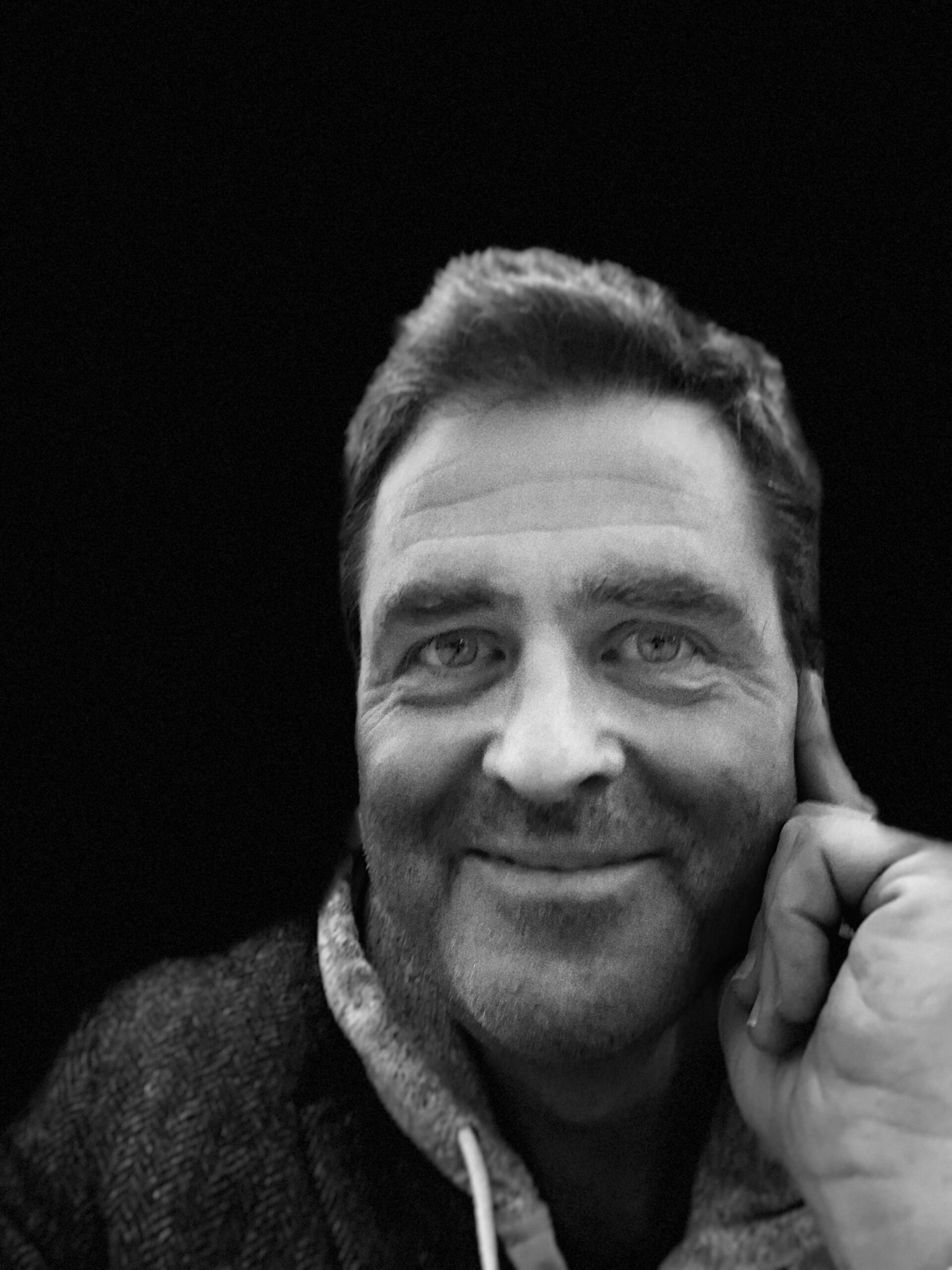
If Josh was at ease in the rambunctious noise of the creative process, it might be because he grew up in a loud Irish Catholic family in the suburbs of Washington D.C. He was welcomed to the world on November 19, 1962 at Columbia Hospital for Women in Washington D.C., the last of nine highly creative children (of varying temperaments and dispositions towards making trouble) born to Philip and Marylin Welsh. Welsh’s mother, Marilyn Kirby Welsh, was fierce and formidable, a combination of joy and rage. His father, Philip Flahavin Welsh – reserved and distant but, quietly, just as definite – worked as an attorney for the Association of American Railroads. Among the brothers and sisters there was much mayhem, fighting and love. As the baby, Josh was offered a less complicated form of love from the family; a rare warmth he was able to stoke by being naturally hilarious, with an insatiable appetite for the limelight. He and his sister Liz staged what was known as “The Eddy and Betty Show,” and he was known to delay his older brothers and their friends from their weekend plans with solo improvisational performances – not that they minded the front row seats. When Steve Martin released his Wild and Crazy Guy comedy album, Josh had it memorized in no time flat. His performance, subjectively speaking, was much funnier than Martin’s. “Josh had me in stitches; I could not stand,” recalled one family friend. “The loss of anyone so insanely creative is a loss to the entire world in such dire need of even a drop of more pure humor.”
Josh took up the guitar when he was a teenager and began an ongoing back and forth with his oldest brother and gifted poet, Philip, Jr., who would send Josh poems with the attached brotherly challenge of “I bet you can’t turn THIS one into a song.” Josh always did, and this ongoing battle of pen and guitar would later evolve into Meatyard, an alt-country musical powerhouse. Meatyard featured a wide variety of band members over the years, but at its core was Josh, Philip (even posthumously), and his nephew Rupert Sandes. Meatyard specialized in meandering melancholic meditations on death, longing and itches that couldn’t be scratched. Josh could make you cry, but he could also growl, howl and slash with genuine punk and rockabilly abandon, laughing all the while at the wonderful, ridiculous audacity of it.

Josh was spared the straitjacket Catholic School education of his siblings. In adult life, he would ultimately veer away from his Catholic upbringing, much to his father’s dismay, but would retain a quasi-eucharistic enthusiasm for donuts, which the Welsh family feasted upon en masse after Sunday mass. Despite his misgivings about Catholicism, Josh was inherently if skeptically spiritual.
In 1980, Josh enrolled at Kenyon College in Ohio, where he met his first wife, Jenny Siegenthaler. He played gigs at a place called Pirate’s Cove. It was, according to one lifelong friend, “musical mayhem” – rough around the edges and full of drive. Despite his punkish inclinations, Josh was much moved by the slithery velvet voice of Al Green, and the syncopated minimalism of his arrangements. For two years, Josh worked as the record buyer for the Kenyon Bookstore. During his regime, Rolling Stone named the bookstore the best college bookstore in the country, an honor largely credited to their record collection.
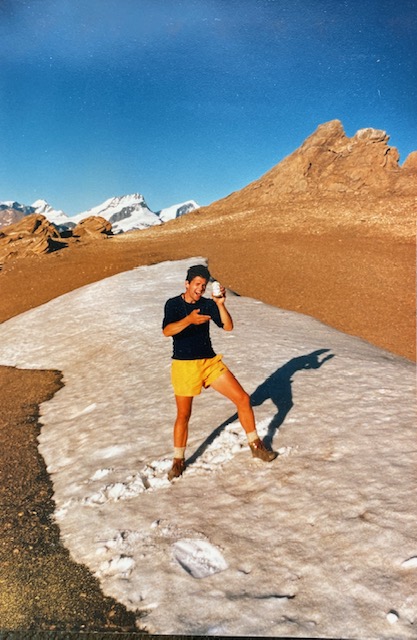
Josh’s defining characteristic of being an “avid ponderer” carried him through the earning of his PhD in philosophy from Johns Hopkins University in 1994. Despite his love of pondering, Josh had second thoughts about the academic life almost immediately. Once he got his PhD, he liked to joke he’d become a truck driver. Misgivings aside, Josh completed his education with said PhD and received special recognition for the defense of his dissertation. He accepted a temporary teaching position at Swarthmore College and started taking acting classes after finishing his degree. After a year of teaching, Josh moved to Los Angeles, CA, to pursue a career in film. While driving from the East Coast to Los Angeles, he recounted, he never once thought about philosophy.
Upon moving to Los Angeles, Josh signed up for more acting classes. He hit the audition circuit, and landed a few roles in films that, for better or for worse, did not make their mark on the silver screen. In 1996, Josh signed up as a volunteer for IFP West, the precursor to what would later become Film Independent – a nonprofit that aims to make film making accessible to those with passion and talent, regardless of social barriers or nepotistic disadvantage. Josh found a very natural place within the organization. He resonated with its cause and his natural abilities served as a highly effective catalyst for its mission. He would serve as President of Film Independent for 12 years, after holding various leadership positions during the preceding 18 years. As President, Josh functioned as incubator-in-chief for successive waves of eager new storytellers, helping to forge a path forward for so many aspiring filmmakers who might otherwise have been left at a dead end. For Josh, the story was second only to the storyteller, to the extent they were differentiable at all. It was his mission to provide emerging artists with the skills needed in screenwriting, directing, acting and producing, to get their stories out there.
Josh’s singular genius, however, was getting people to believe they had stories to tell, and that they were the ones to tell them. He didn’t give rah-rah speeches; he didn’t bang tables. Instead, he brought to bear a measured critical intelligence. But he also radiated an irrepressible excitement, his improbably bright blue eyes perpetually on the verge of astonishment. Artists and co-workers who worked with him over the years didn’t just feel seen; they were seen. He greeted Film Independent co-workers by first and last name, punctuated always with a hearty exclamation mark. He was hands on with every person at every level of the organization. Even when returning from cancer treatment, Josh would stop to talk to people on his way back to his office, offering an eager line of inquiry regarding their work and most recent projects. He was genuinely curious. Film Independent wasn’t “work” for Josh, although it was objectively hard work – it was his passion.
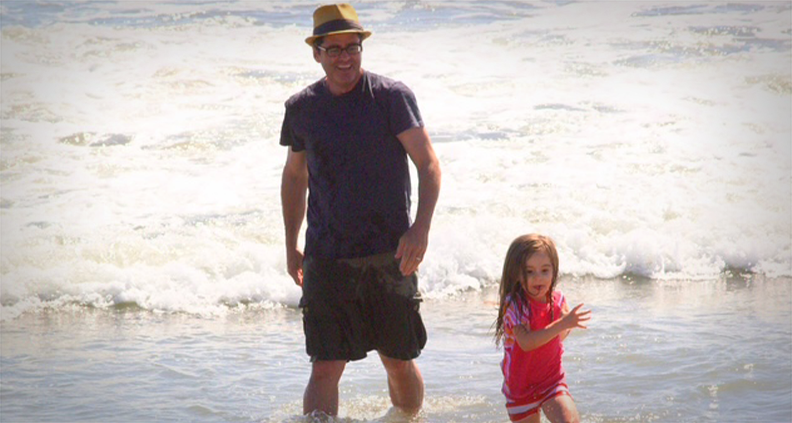
Just after the mass computer mayhem of Y2K, he would meet Bonnie Gavel, with whom he made a connection. He extended an invitation to a Halloween party where he confessed to a crush on her, and the two eventually exchanged wedding vows on Halloween 2004 in New Orleans. They welcomed a daughter, Isla June Welsh, into the world on July 4, 2006. They purchased their home in Glendale, CA together, where Josh would spend the rest of his life. Josh had always been a wonderful brother, son and uncle – with his wife and daughter that dedication was extended and multiplied. Josh was absolutely over the moon with his daughter, Isla, and over the years photographed many Saturday adventures together. Another valuable quality that he brought to his family life was his rare ability to laugh at himself, as Bonnie Gavel recalls. She fondly remembers her husband as a warm, loving man who didn’t judge people on trivial matters and saw no one as less than himself despite his success. He was far more focused on drawing connections than splitting hairs, Bonnie remembers, citing a quote from Josh who was talking in his sleep at the time: “I don’t care about differences between people.” He truly didn’t. Through good times and bad, with Josh there was always love and humor – these were nonnegotiable.
His efforts to make a career in film a reality for people who might not otherwise have an avenue towards it followed the pattern of his general radiance during his long career at Film Independent. As Bonnie put it, “he loved people and he loved creativity.” In life he immersed himself in both. He was loved by the people who shared his love of creativity and worked alongside him to broaden accessibility to the same. In the aftermath of his passing, he has been honored publicly and privately by those he worked with day-to-day because he was truly seen for who he was, what he was, and what both of those factors offered to aspiring filmmakers, and people and creativity at large. Brenda Robinson, Film Independent’s acting President, who has long worked and walked alongside Josh, summed it up: “Josh is a visionary of the type that comes along once in a lifetime. We want his work and impact to continue on because he is a great leader. He is a person of exceptional character. I speak about him very deliberately in the present tense, because he’s still here. We will feel his spirit in the programs he created and the lives of filmmakers he impacted, always and in all ways. Josh is only absent in the body, but the spirit of who Josh is and what he means to this community – that is forever.” Within his professional role of occupying the spotlight well enough to offer it to others, and behind each door he helped to open for someone without a key of their own, he is indeed very much “still here.”
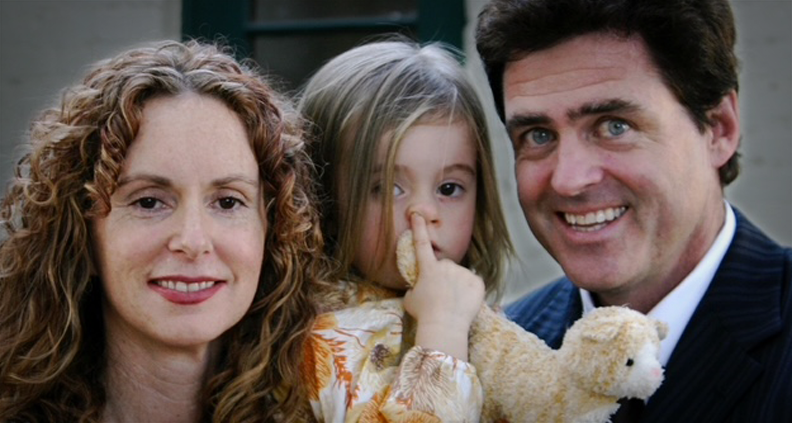
Josh Welsh is survived by his wife, Bonnie Gavel; his daughter, Isla June Welsh; brothers Nick and Joseph Welsh; his sisters Liz and Monica Welsh; his nieces and nephews including Rupert Sandes of Meatyard, Anna Rose, Isaac, Rachael, Bridgette, Thomas, Liam, Caela, Samuel, Lulu, and Jacob; and in-laws Amy Brodigan, Roger Sandes, Marie Smeriglio, Cindy Welsh and Scott Gavel, and Robert Heckman. He will be forever loved, forever “here” in the lives he changed and stories that accredit their utterance to him – and if whatever halls he has found access to did not have music before, we can be certain they do now.
For over 40 years, Film Independent has helped filmmakers get their projects made and seen. The nonprofit organization’s core mission is to champion creative independence in visual storytelling and support a community of artists who embody diversity, innovation and uniqueness of vision.
Keep up with Film Independent…



